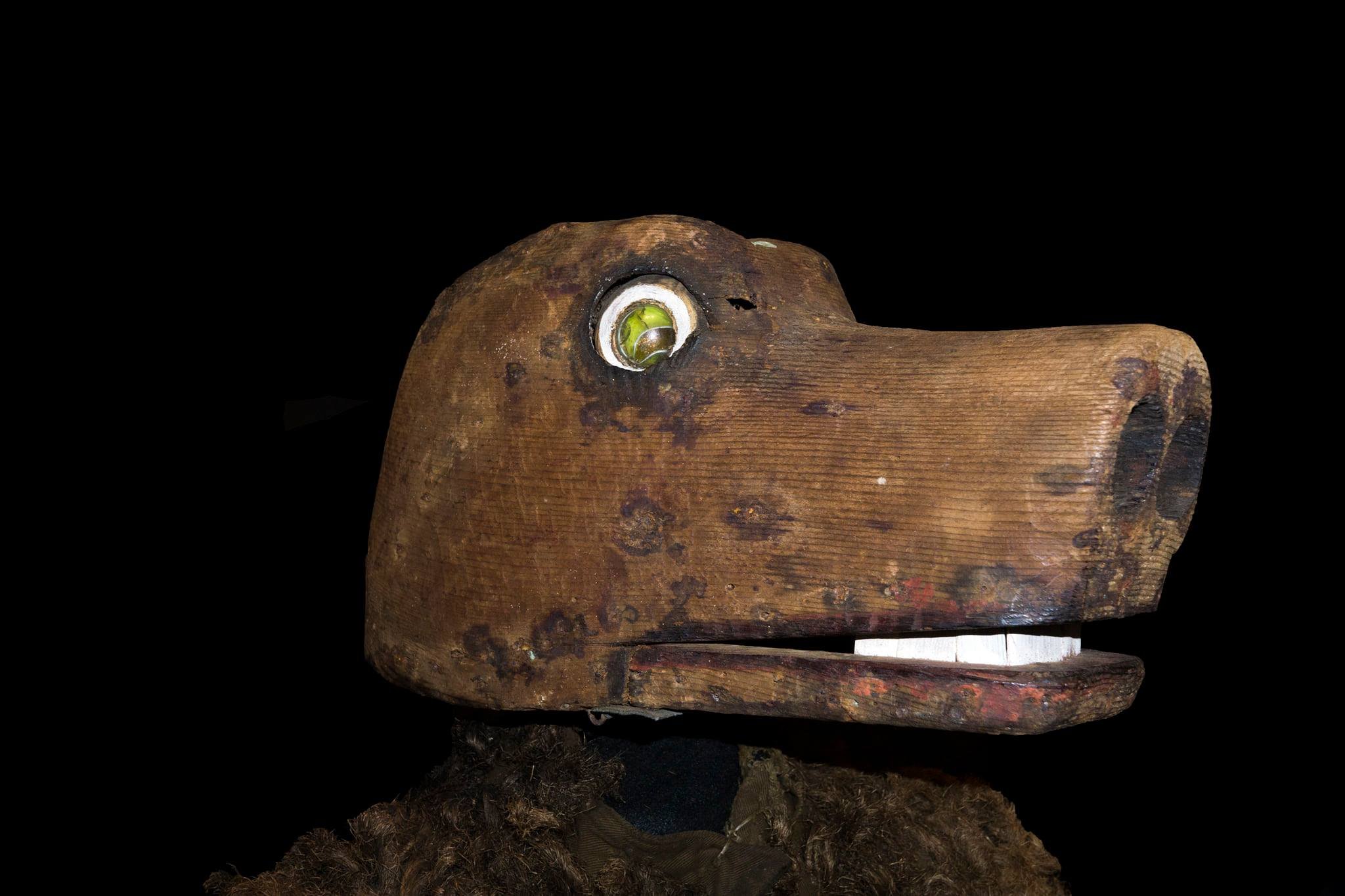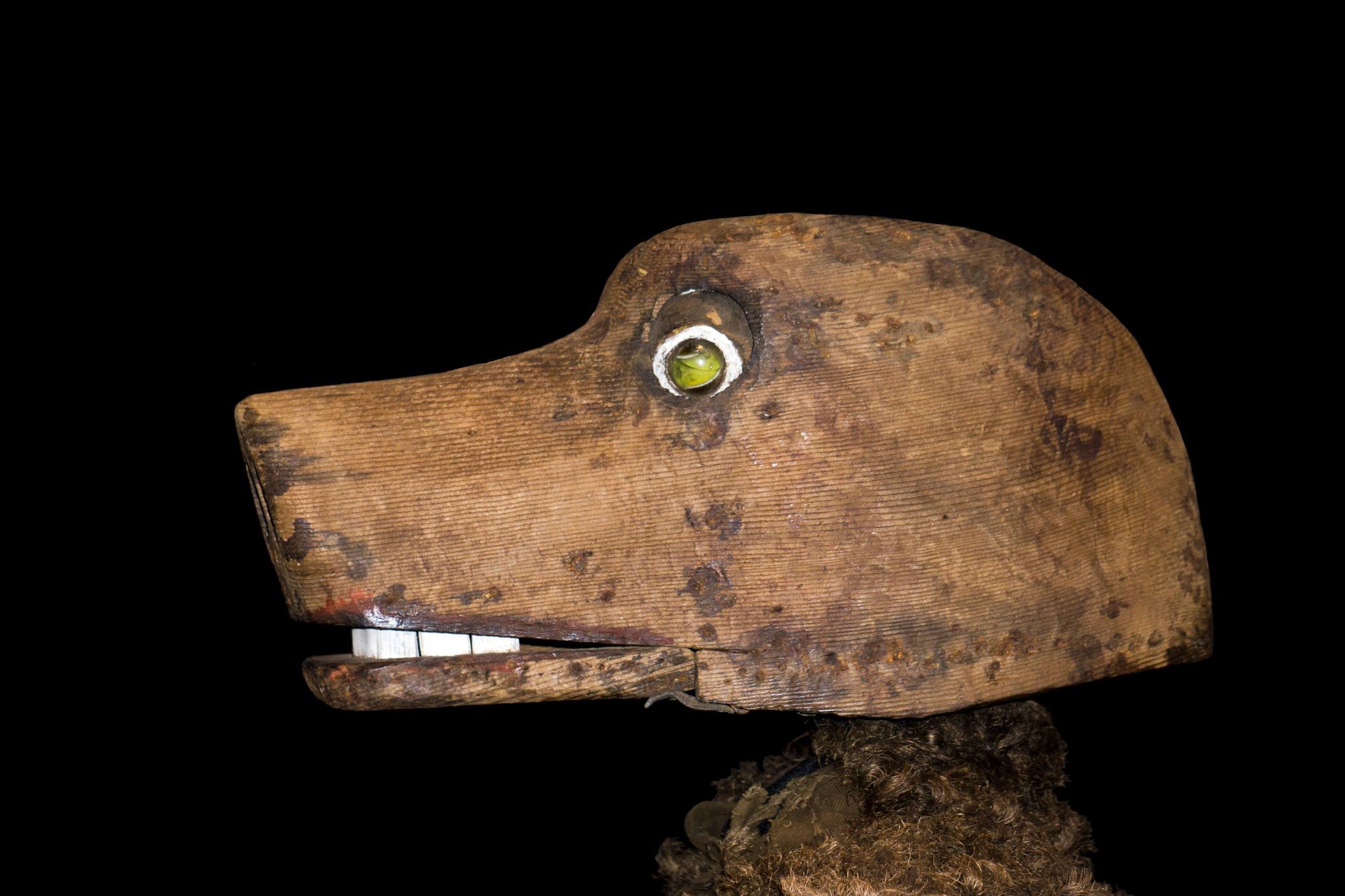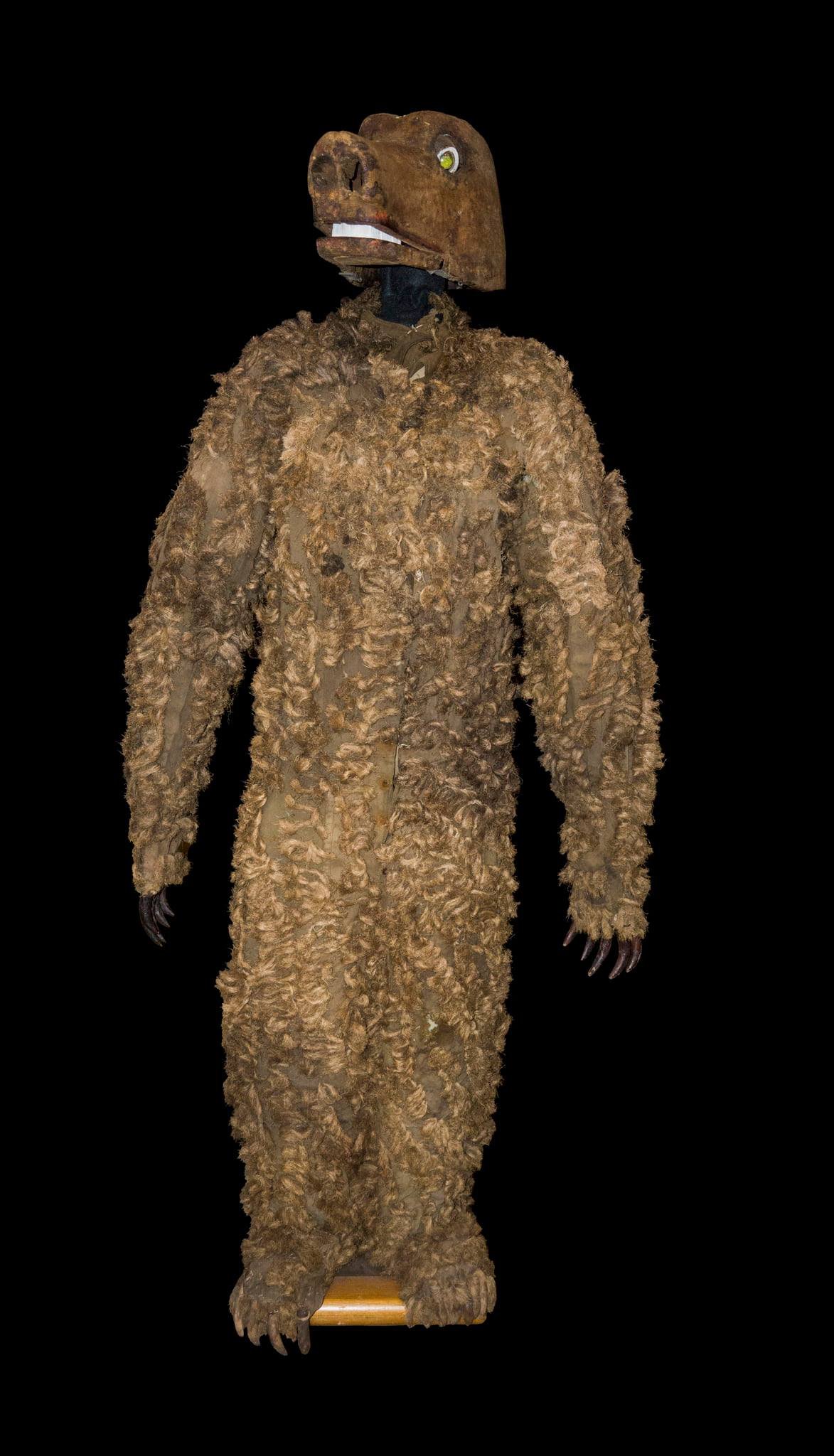Kwakiutl Grizzly Bear Costume
Today we are highlighting this Kwakiutl grizzly bear costume. To understand the significance of this costume and its use, we must first examine the social structure of the Kwakiutl people. The Kwakiutl, also known as the Kwakwaka’wakw, is a coalition of seventeen Pacific northwestern tribes that speak the Kwak’wala language (“Our Culture”). Kwakiutl villages are organized into ’na’mimas or large, extended family units, in which members of these groups are further divided by social classes (“Our Culture”).
Such stratification formed the basis of the Kwakiutl’s potlatches ceremonies. Generally performed during important community events, such as weddings, potlatches were hosted by the ’na’mima leader or other wealthy individuals (“Kwakiutl Ethnography”). In preparation for these ceremonies, the hosts would accumulate wealth, goods, and other valuable objects (Barnett 351). During the potlatch, these items would then be destroyed or distributed throughout the group, reaffirming the hosts’ wealth and influence in the ’na’mima (Barnett 351). Potlatches often included communal feasting, dancing, and other ritual practices (“Kwakiutl Ethnography”).
As pictured above, this Kwakiutl grizzly bear costume was most likely used during potlatches. While this costume is reflective of a grizzly bear, it is not made from its fur, rather it consists of a canvas overall covered with raveled rope. Similarly, the mask is carved from wood and has a hinged jar that is able to be easily manipulated during dances! These costumes were passed down through families and would only be worn by higher-status individuals, as animals were incredibly sacred to the Kwakiutl and linked to their ancestral descent (Rosman and Rubel 620; “Kwakiutl Ethnography”).
During the late nineteenth century, potlatches became hotly debated by the Canadian and United States government. Citing these ceremonies as “anti-Christian” and reckless, both agencies banned these ceremonies for the greater part of the twentieth century (Gadacz). These laws would eventually be repealed, and the Kwakiutl continue their potlatches today (“Our Culture”).
Works Cited
Barnett, Homer Garner. “The nature of the potlatch.” American Anthropologist 40.3 (1938): 349-358.
Gadacz, René R. “Potlatch.” The Canadian Encyclopedia, 24 October 2019, Historica Canada. www.thecanadianencyclopedia.ca/en/article/potlatch. Accessed 30 March 2023.
“Kwakiutl Ethnography.” Milwaukee Public Museum, https://www.mpm.edu/research- collections/anthropology/online-collections-research/kwakiutl/ethnography. Accessed March 30, 2023.
“Our Culture.” Kwakiutl Band Council, https://www.kwakiutl.bc.ca/our-culture, Accessed March 30, 2023.
Rosman, Abraham, and Paula G. Rubel. “Structural patterning in Kwakiutl art and ritual.” Man (1990): 620-639.
Credit to Liley Bozard and Olivia Lee




